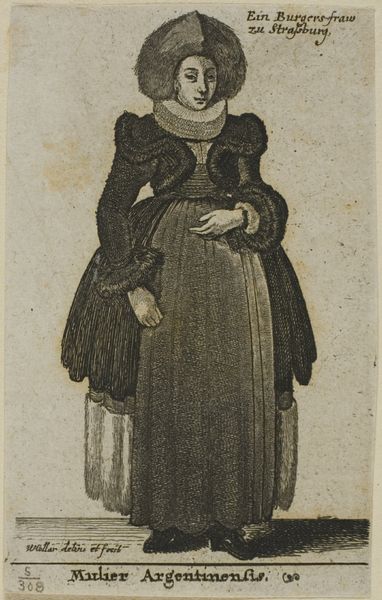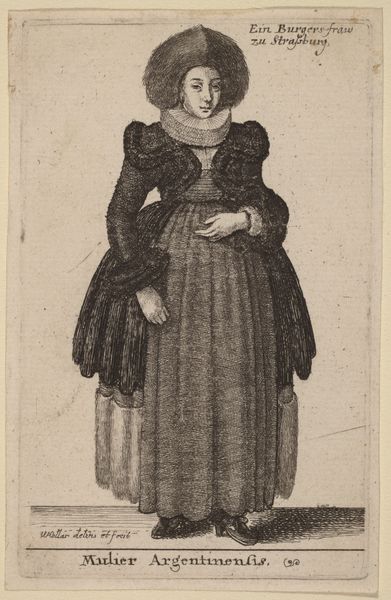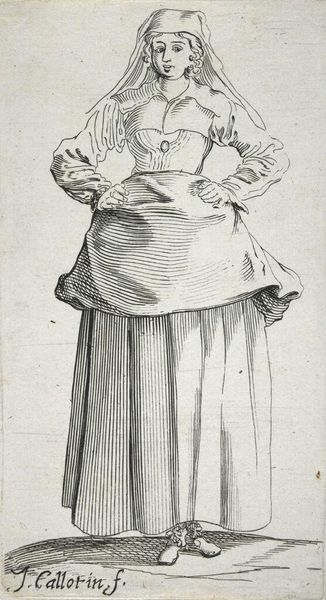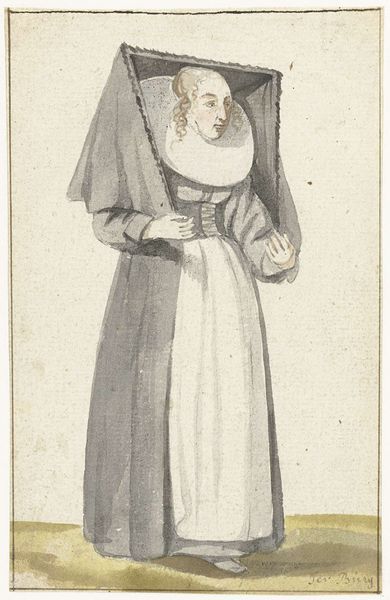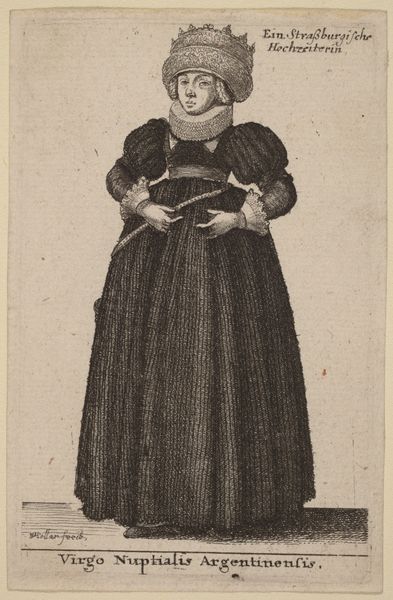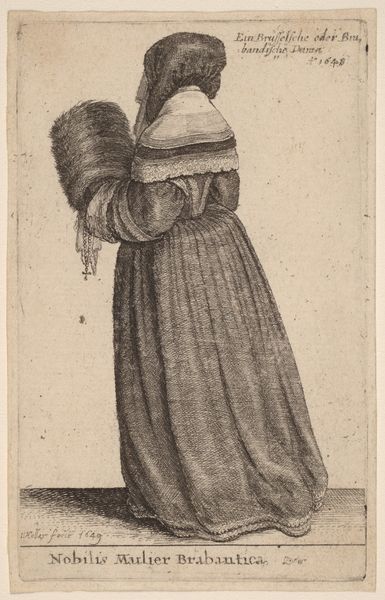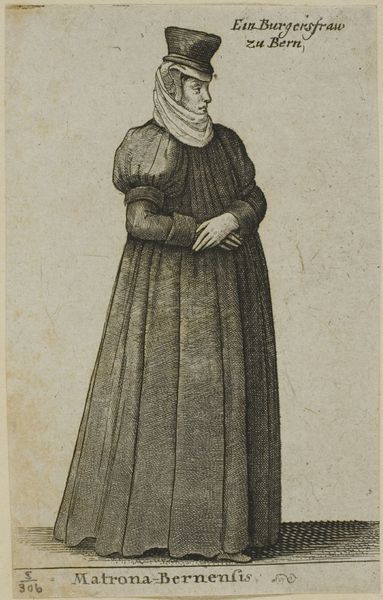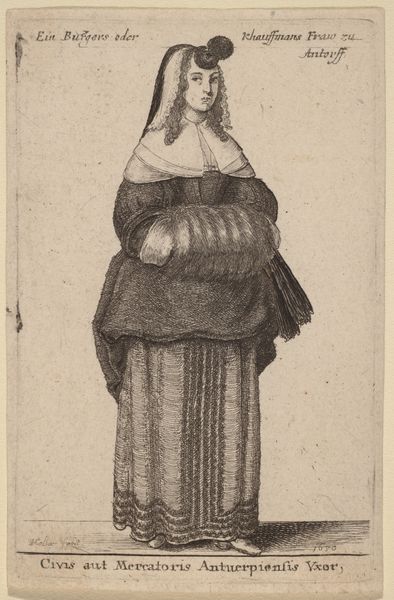
print, engraving
#
portrait
#
baroque
# print
#
old engraving style
#
figuration
#
dress
#
engraving
Dimensions: height 91 mm, width 60 mm
Copyright: Rijks Museum: Open Domain
Curator: Wenceslaus Hollar's "Matrona Argentinensis Coenam Dni", created in 1644, is an engraving housed at the Rijksmuseum. What’s your initial read on this piece? Editor: The figure's stiffness strikes me first; her rigid posture, and the somewhat uniform hatching that defines the volume of her dress lend the piece an almost melancholic air. Curator: Indeed, the rigid posture can speak volumes. This print offers us a glimpse into the social norms of the time, specifically, the expectations placed on women of a certain class in 17th-century Strasbourg. Her attire speaks to status and adherence to societal expectations. Editor: Agreed. The tightly defined lines create patterns of dark and light which contribute a lot. Take her large ruff—the radial design is nearly hypnotic! The linear repetition adds to the overall sense of formalized constraint you mentioned. Curator: And the title! "Matrona Argentinensis Coenam Dni" translates roughly to "A Strasbourg Matron Attending the Lord's Supper." So, the artist depicts her in her religious and social role. This engraving serves as a historical document reflecting the intersection of religion, social standing, and gender roles. How interesting to observe how codes of modesty or decorum shaped identity and dictated the visual representation of women! Editor: Looking at her garments I am curious to explore the construction of the sleeves, as the folds within it add an incredible texture, standing out when juxtaposed with the plain dress in the middle. The cap seems so simplified too. The whole is an exquisite demonstration of creating texture with very basic line work, so essential to appreciating it as an object of the period. Curator: Absolutely. It’s crucial to remember Hollar was capturing and also perhaps commenting on these strictures. How would our reading of this matron shift if we knew her personal narrative? What challenges did she face within this societal structure? Editor: Without biographical information we may never really know. Still, examining the internal structure of the piece—the contrast, the lines, and the implied space—gives us enough material for an interpretation that extends into present times. Curator: Yes. Ultimately, by considering both form and historical context, we deepen our understanding and provoke meaningful questions about the enduring dialogues around identity and representation.
Comments
No comments
Be the first to comment and join the conversation on the ultimate creative platform.
